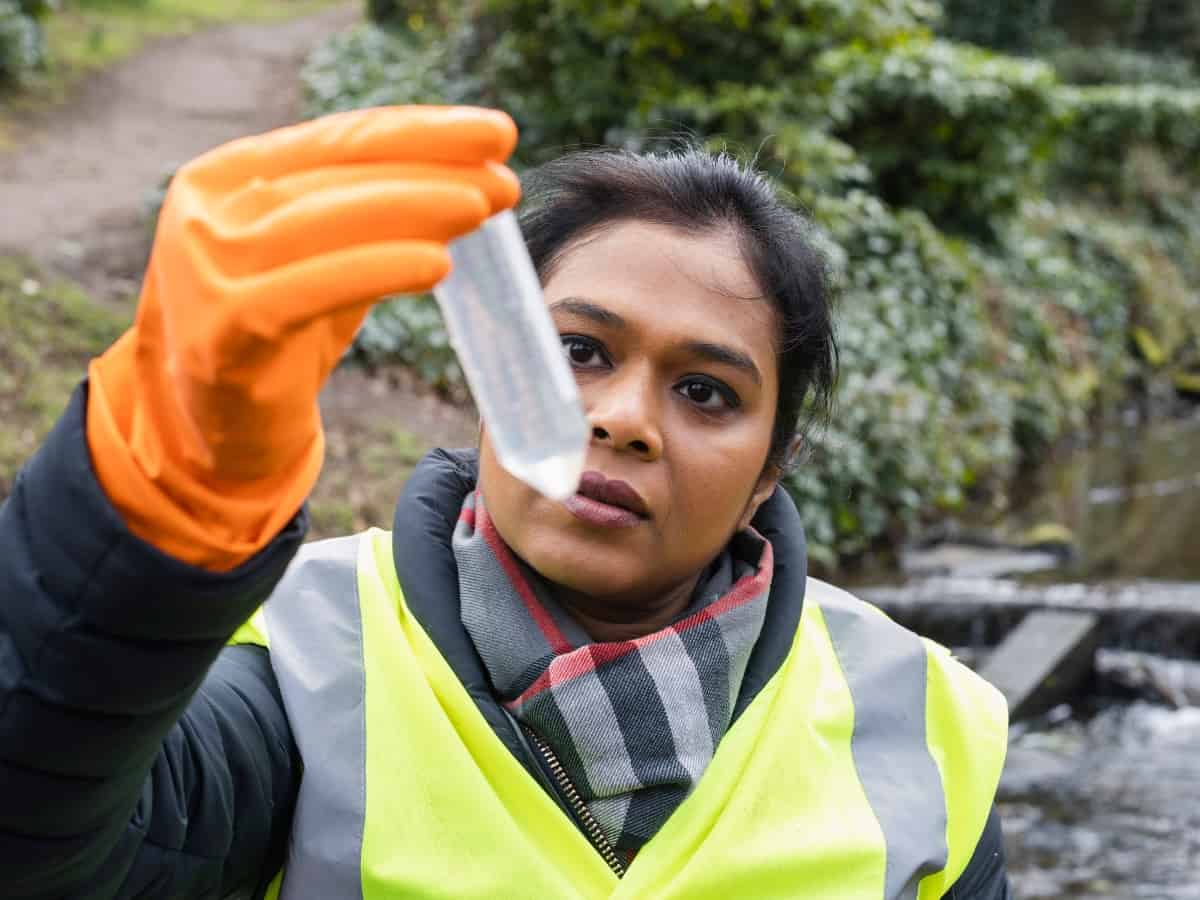The exposure, widespread occurrence, and extreme persistence of “forever chemicals” is becoming nighttime. Research shows that 97% of Americans have these chemicals in their blood. So, what are forever chemicals, and should you be concerned about them? Read on to find out.
This article looks closely at forever chemicals—what they are and where they come from. We will also look at their impact on human health and the environment.
What Are Forever Chemicals?
“Forever chemical” or perfluoroalkyl and polyfluoroalkyl substances (PFAS) are a type of man-made chemicals. The common PFAS are Perfluorooctane Sulfonate (PFOS) and Perfluorooctanoic Acid (PFOA), which have been widely studied and even some regulations set. PFAS do not break down easily. Instead, it accumulates in the environment as well as in human tissues. Some PFAS can take over 1,000 years to degrade, which is why they are referred to as “forever chemicals.” Forever chemicals are also persistent, bioaccumulative, and toxic (PBT), meaning they are among the most harmful chemicals in the world. According to the Centers for Disease Control and Prevention (CDC), more than 9,000 different forever chemicals exist.
PFAS have been used in various consumer products, including nonstick cookware, stain-resistant fabrics, and fast-food wrappers. They are also found in industrial settings, such as construction, military, and firefighting. Forever chemicals contribute to environmental pollution, and high accumulation can lead to adverse health risks.
Studies on PFAS go back to the 1950s when 3M conducted research that found that PFAS can build up in human blood. However, it was not until 1998 that 3M provided evidence to the U.S. Environmental Protection Agency (EPA). Unfortunately, over two decades later, people are still exposed to this harmful chemical. Some efforts have been made to eliminate PFAS, although there’s still a long way to go. A few examples of forever chemicals are:
- PFBS
- PFHxS
- PFOS
- FHA
- PHONE
- PDA
- GenX

Have Forever Chemicals Been Phased Out?
The EPA launched a global stewardship program and requested eight major companies to join in an aim to phase the chemicals out. These companies include:
- Arkema
- Asahi
- BASF Corporation (successor to Ciba)
- Clariant
- Daikin
- 3M/Dyneon
- DuPont
- Solvay Solexis
The program aimed to eliminate emissions and manufacture products with “long-chain” chemicals by 2015. Companies have since phased out PFOA and PFOS, although they persist in the environment. It’s important to note that although these chemicals were taken off the market, there are new PFAS that manufacturers use in their product making.
Where Are Forever Chemicals Most Abundant?
Forever chemicals are found in the air, food, water, and soil. You can be exposed to them by inhaling, eating, and drinking anything contaminated with PFAS. Here are some ways you can get exposed to these chemicals.
Eating Contaminated Food
PFAS seeps into the soil, and their buildup may contaminate the plants and also the animals feeding on the plants. However, according to the United States Food and Drug Administration (FDA), foods grown in a PFAS environment do not necessarily mean they have detectable levels. This will entirely depend on the PFAS and food type. On the other hand, the FDA found that seafood had high levels of forever chemicals. Therefore, eating fish or other seafood from PFAS-contaminated areas can expose you to the chemical.
Your Drinking Water
PFAS chemicals are water soluble and mobile and can get into water sources easily. When industries use, dispose or spill “forever chemicals,” they are dispersed into the air and soil. Then, they get into the water sources such as lakes and rivers through surface runoff. They can also enter your well water through the soil. According to the Environmental Working Group (EWG), over 200 million American drinking water sources have PFAS. In other studies, researchers found that rainwater and bottled water also contain “forever chemicals.” This makes it crucial to test your water, no matter its sources.
Inhaling the Chemicals
Workers working in industries that use “forever chemicals “are at a high risk of exposure. Furthermore, you can inhale PFAS from indoor spaces with products treated with PFAS, like carpets and textiles.
Pregnancy and Breastfeeding
Studies show that prenatal exposure to PFAS can significantly affect a child’s and mother’s health, leading to gestational diabetes and slow fetal growth. A Harvard T.H. Chan School of Public Health study shows a 20-30% increase in PSAF levels in exclusively breastfed babies. On the other hand, partially breastfed children have a lower increase in these chemicals.
When breastfeeding stops, the children’s PFAS level reduces, meaning breast milk is a source of exposure in infants. However, researchers still advise mothers to breastfeed since the benefits of breast milk are higher than any potential risks of exposure.
Here are products that may contain PFAS:
- Nonstick cookware
- Water-repellent clothing
- Grease-resistant packaging such as microwave popcorn maize, fast food wraps, pizza boxes
- Cleaning products such as laundry detergents
- Personal care products: Shampoo, lotions, shaving cream, cleansers, dental floss
- Cosmetics such as nail polish, lipstick, eye shadow, and mascara
- Paints, varnishes, and sealants

How Do Forever Chemicals Get into Our Environment?
Here are a few ways that forever chemicals end up in the air, soil, water, and food:
- Releases from industrial facilities
- Runoff from agricultural fields
- Application of firefighting foams at airports and military bases
- Leakage from landfills and waste incineration
- Disposal of consumer products
What Are the Health Risks of Forever Chemicals?
PFAS can have toxic effects when they enter the human body and wildlife. It also highly affects our future generation. One concern is how they bioaccumulate in the body. This means that they are absorbed in the body, and instead of being excreted and destroyed quickly, they only continue to build up over time to dangerous levels.
Scientists continue to research the health effects that forever chemicals can cause. Here is what they have found so far:
- Reproductive system damage
- Negatively affect a child’s development
- Decreased vaccine response in children
- Weakened immune and increased risk of thyroid function
- High risk of liver and kidney disease
- Risk of cancer
- Increase in cholesterol levels
- Risk of obesity
How Can You Reduce Your Exposure to Forever Chemicals?
There is currently no way to eliminate or accelerate the clearance of PFAS from the body. However, the levels may decrease over a long period.
Unfortunately, PFAS are almost everywhere in the food, water, soil, air, and clothing, so it becomes more challenging to eliminate them. However, you can try making some lifestyle changes to reduce your risk.
- Avoid cooking with nonstick cookware.
- Consider the source of your fish by checking your local fish advisory.
- Avoid fast foods and takeaways
- Make your popcorn and avoid microwave bags.
- Go for carpets and other textiles that have PFAS- or PFC-free labels.
- Avoid personal care products with “fluoro” or PTFE chemicals
- Test your soil and water if you live in an area that has a high risk of contamination, such as near a military base.

What’s Being Done to Regulate Forever Chemicals?
The existence of forever chemicals is a global issue. As a result, various governments have taken action to regulate them. For example, the U.S. Environmental Protection Agency regulates some PFAS and has phased some, such as PFOA and PFOS. We have also seen Congress pushing for lower limit levels of PFAS in water, which the EPA released in June 2022. In addition, state governments are working to ban PFAS in food packaging and restrict the use of Aqueous Film Forming Foam (AFFF). Other organizations, such as FDA, ATSDR, NIH, CDC, EWG, NIEHS, and NTP, are working towards a solution. This is done by doing more research, while others provide resources.
How Do You Know If Your Water Has PFAS?
The EPA had set a non-enforceable health advisory for PFOA and PFOS levels to 70 parts per trillion (ppt), which has been in place since 2016. In June 2022, they issued a new drinking water health advisory regarding PFAS levels set at 0.02 ppt on PFOS and 0.004 ppt on PFOA..
You can contact the local water utility company if you’re using tap water and are concerned about PFAS in your water. The company can give you information on PFAS levels in your water. However, the best option is to conduct a water test in your home to ensure the levels do not exceed the new EPA limits. If your water source is a private well, ensure you do a test to know your home’s water quality. You can decide to do the test yourself, but it’s always advisable to use the services of a professional company.
How Do You Remove PFAS from Drinking Water?
The best method to remove PFAS from drinking water is by using a filter. There are many types of filters on the market, from simple carbon filters to reverse osmosis systems that purify the water at high pressure. However, combining reverse osmosis and carbon filtration is one technique that works well in removing PFAS from your tap water. Combining them gives you the most effective system that eliminates PFAS and a wide range of pollutants.

Get Clean Water From ONIT Home Water Filtration System
We hope we have answered the question of “what are forever chemicals?” and hopefully, you now understand them better. As the government and organizations involved continue to do more research to eliminate PFAS, the ball is now in your court. Using water filters is the only and best choice to eliminate PFAS from your water. You can do this with ONIT Home water filtration. The EPA has found our filtration system effective since we have combined granulated activated carbon and reverse osmosis technology. With this system, you’re guaranteed clean water to keep your family safe.
For more information about what are forever chemicals and how they affect your water, visit our website today. You can also call us on 1-833-433-0331 to speak to our experts. Need clean water? We’re ONIT!



